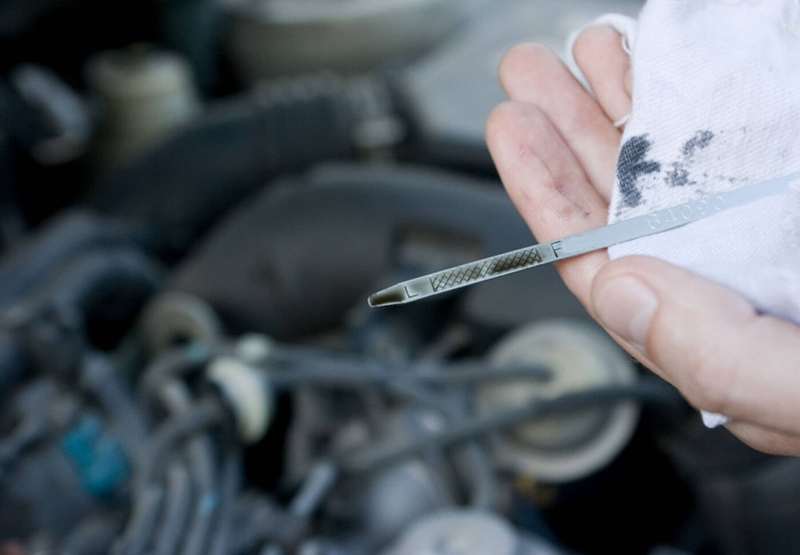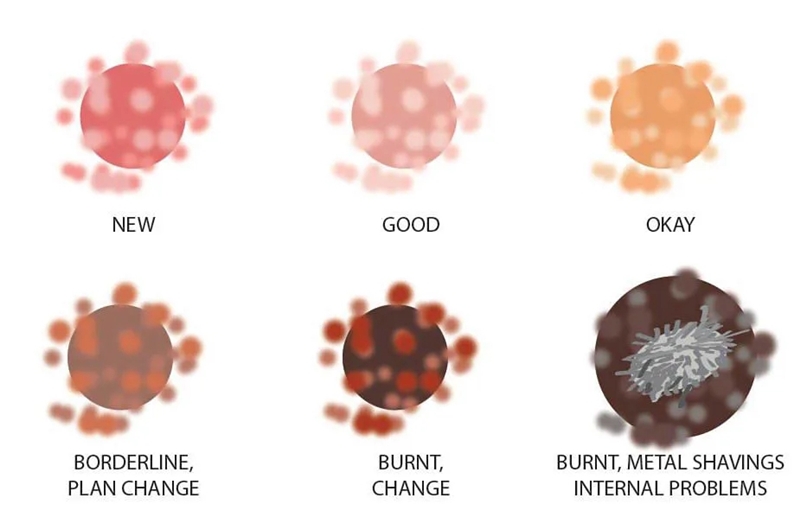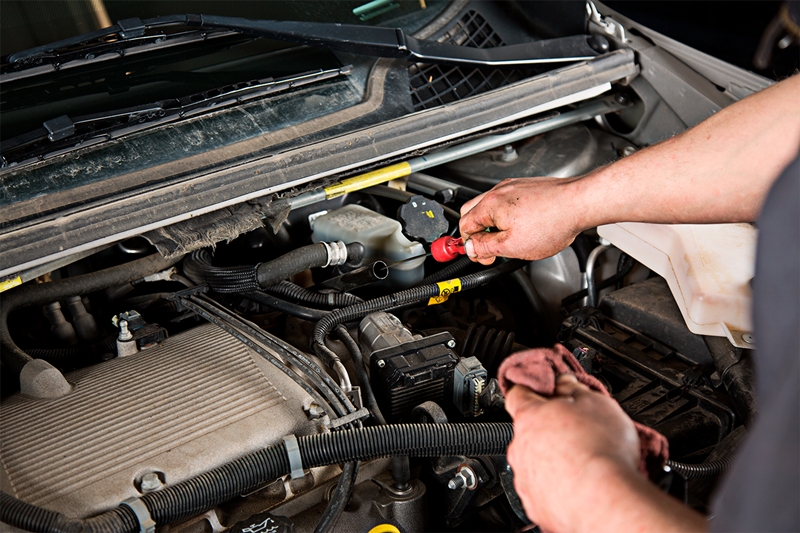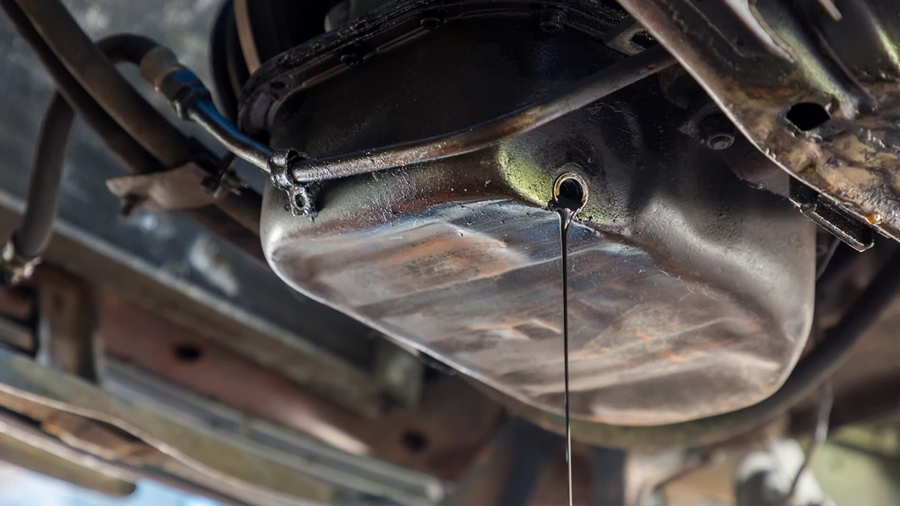Keeping your car in great shape isn’t just about regular oil changes and tire rotations. One important step that often gets overlooked is checking the transmission fluid. This fluid is super important for your car’s transmission system, which is what transfers power from the engine to the wheels.
Also read: 8 Signs of Clutch Slipping (Don’t Panic—Here’s What to Do)
If you don’t have enough transmission fluid, you might run into shifting problems, overheating, or even a complete transmission breakdown, which can be really expensive to fix.
Table of Contents

Key Takeaway: 7 Reasons Why Check Transmission Fluid When Engine is Running
1. Get Accurate Fluid Level Measurements
- Fluid expands when heated and contracts when cold
- Engine-off readings can be misleading (too high or too low)
- Running engine shows true operating fluid levels
2. Proper Fluid Circulation Assessment
- Fluid spreads throughout the transmission system when engine runs
- Shows how fluid behaves during actual driving conditions
- Reveals circulation issues that aren’t visible when engine is off
3. Early Problem Detection
- Spot color changes (dark/burnt fluid vs. bright red/pink)
- Detect burnt smells indicating overheating or wear
- Identify contamination or debris in the fluid
4. Prevent Overfilling or Underfilling
- Avoid foaming from too much fluid
- Prevent overheating from too little fluid
- Ensure optimal lubrication levels
5. Follow Manufacturer Specifications
- Most car manufacturers recommend engine-running checks
- Meets warranty requirements and maintenance standards
- Ensures compliance with proper service procedures
6. Save Thousands in Repair Costs
- Catch small issues before they become major problems
- Avoid complete transmission replacement (can cost $3,000-$5,000+)
- Simple fluid maintenance vs. expensive rebuilds
7. Ensure Safety and Vehicle Reliability
- Prevent dangerous breakdowns on the road
- Maintain smooth shifting and optimal performance
- Extend transmission lifespan and overall vehicle health
A Common Mistake
A lot of drivers think they should check the transmission fluid with the engine off, but that’s a common mistake. Understanding why check transmission fluid when engine is running becomes clear when you realize that doing this with the engine off can give you a wrong idea of the fluid level and condition. When the engine is off, the transmission fluid settles in the pan, so you won’t get an accurate reading of how much fluid is actually in the system when the car is running.
To get a true reading, check the transmission fluid while the engine is running and the car is in park. This way, the fluid is spread out through the transmission system, giving you a more accurate level.
Get Accurate Transmission Level Reading
To check the transmission fluid level right, make sure your car is parked on a flat surface. With the engine running, find the transmission dipstick, usually near the back of the engine bay. Pull out the dipstick, wipe it clean with a lint-free cloth, and put it back in.
After a moment, pull it out again and see where the fluid level is on the dipstick markings. It should be in the “full” range. If it’s low, you’ll need to add the right type of transmission fluid as listed in your owner’s manual.

Condition of Transmission Fluid
Besides checking the transmission fluid level, you also want to check the condition of the transmission fluid. It should be a bright red color and not smell burnt. If it looks dark or smells burnt, it might be time to change it. This is another reason why check transmission fluid when engine is running – you can better assess both the level and condition when the system is operating normally.
Regularly checking and keeping up with your transmission fluid helps ensure smooth shifting and keeps you from facing costly repairs from neglect.
Understanding Transmission Fluid
What Is Transmission Fluid?
Transmission fluid is like the lifeblood of your car’s transmission system. It lubricates moving parts, cools the system, and helps gear changes go smoothly. Automatic transmissions rely heavily on it to shift gears properly, while manual transmissions use it for lubrication as well. Different cars need different types of transmission fluid, so using the right kind is key.
Regularly checking and maintaining your transmission fluid is essential for the overall health of your vehicle. Over time, transmission fluid can become contaminated with debris and lose its effectiveness, leading to potential transmission issues. It’s advisable to follow your manufacturer’s recommendations regarding fluid change intervals, as neglecting this can result in increased wear and tear on your transmission components.

Why Transmission Fluid Level & Quality Matter
If your transmission fluid is dirty, low, or worn out, it can lead to rough gear changes, slipping gears, or overheating. Over time, dirty or not enough fluid can wear out parts faster and result in expensive repairs. Keeping your fluid clean and at the right level helps your transmission run smoothly and last longer.
Regularly checking your transmission fluid’s level and condition is key for taking care of your vehicle. This is exactly why check transmission fluid when engine is running – you get the most accurate reading when the system is actively circulating fluid through all components. It’s a good idea to follow the manufacturer’s suggestions for when to change the fluid, as this can help you avoid problems before they get worse. Also, using the right type of transmission fluid is important, since different vehicles need specific types to work their best.
The Importance of Transmission Fluid Maintenance
Good transmission fluid helps prevent your vehicle from overheating, which can lead to complete transmission failure. When the fluid isn’t circulating properly, you risk getting stranded or worse, experiencing a dangerous breakdown on the road. Understanding why check transmission fluid when engine is running becomes crucial for safety – it ensures you’re monitoring fluid levels when the system is operating under normal conditions. Neglecting fluid maintenance is a gamble with your safety and your wallet.
In addition to overheating, low or degraded transmission fluid can cause increased friction and wear on vital components, leading to costly repairs that could have been avoided with regular maintenance. The fluid also serves to lubricate gears and clutches, ensuring smooth operation and optimal performance. Many mechanics will tell you why check transmission fluid when engine is running – it’s because this method provides the most reliable assessment of your transmission’s actual operating condition.
Why Check Transmission Fluid When the Engine Is Running
1. Accurate Measurement of Fluid Level
When the engine’s running, the transmission fluid heats up and expands. If you check the level with the engine off, you might get a misleading reading—either too high or too low. Checking it while the engine’s on gives you a real look at the fluid level during normal use. A lot of manufacturers suggest doing it this way because it shows how things really are when the car’s in action. This fundamental understanding of why check transmission fluid when engine is running forms the basis of proper transmission maintenance.
Importance of Accurate Fluid Levels
Keeping an eye on your transmission fluid level is super important for keeping your car’s transmission running smoothly and lasting longer. If there’s not enough fluid, things can get too hot and wear out faster, leading to big problems down the road. On the flip side, too much fluid can cause it to foam up, making it less effective. So, it’s a good idea to check the fluid while the engine’s running.
Also, getting to know your specific transmission fluid—like how thick it is and how it reacts to temperature changes—helps you decide when to do maintenance or change it out.
2. Detecting Early Transmission Problems
Looking at the color, smell, and consistency of the fluid can reveal early signs of trouble. Fresh transmission fluid is usually pink or red, with a slight sweet smell. Dark, burnt-smelling fluid signals overheating or wear. This is another key reason why check transmission fluid when engine is running – checking while the engine runs allows you to catch these issues sooner and act before major damage occurs.
Additionally, the consistency of the fluid should be smooth and slippery; if it feels gritty or has particles suspended in it, this could indicate contamination or internal damage within the transmission system.
3. Preventative Maintenance and Cost Savings
Routine checks can catch problems early, saving hundreds of dollars in repairs. For example, noticing dark or foul-smelling fluid early might mean a simple drain and refill. Understanding why check transmission fluid when engine is running becomes even more valuable when you consider the cost savings – regularly inspecting fluid while the vehicle operates helps catch issues before they become costly repairs or breakdowns.

Step-by-Step Guide to Checking Transmission Fluid Level with the Engine Running
1. Prepare for the Transmission Oil Check
Start by parking your car on a flat surface. Turn on the engine and let it warm up to normal operating temperature. This preparation step highlights why check transmission fluid when engine is running – the fluid needs to reach its proper operating temperature and circulation pattern for an accurate reading. Use gloves and a clean cloth, and locate the transmission dipstick—often found near the engine bay. Read your owner’s manual if you’re unsure.
2. Perform the Check of Transmission Fluid Level
Pull out the dipstick and wipe it clean with a cloth. Re-insert it fully, then pull it out again. Check the fluid level against the marked indicators. Observe the color and smell of the fluid. It should be bright red or pink and nearly odorless. Understanding why check transmission fluid when engine is running becomes clear during this step – the engine’s operation ensures the fluid is properly distributed throughout the transmission system. Low levels or off colors mean it’s time to add or replace fluid.
3. Record and Acting on Results
Keep notes on the fluid condition. If it’s dark, smells burnt, or is low, consider topping up or scheduling a service. Never overfill, as excess fluid can cause leaks or damage. This is yet another reason why check transmission fluid when engine is running – you can accurately assess how much fluid to add without overfilling when the system is operating normally. Regular maintenance helps keep your transmission working smoothly.
Common Mistakes to Avoid When Checking Transmission Fluid
1. Checking Transmission Fluid with the Engine Off
A lot of folks assume they can check the transmission fluid levels with the engine off, but this often gives misleading results. The fluid shrinks when it’s cold and expands when it’s hot, so checking with the engine off might not show the real fluid level. This is precisely why check transmission fluid when engine is running – you need the fluid at its proper operating temperature and circulation.
Make sure to run the engine for a few minutes to warm it up, letting the transmission fluid expand so you can get an accurate reading. This easy step is key to keeping your transmission in good shape.

2. Overfilling or Underfilling the Transmission with Fluid
If you add too much fluid to your car’s transmission, it can foam up and mess with lubrication, possibly causing serious damage over time. Understanding why check transmission fluid when engine is running helps prevent overfilling – when you check with the engine operating, you see the actual fluid level under normal conditions rather than when it’s settled.
But if there’s not enough fluid, you could end up with overheating, gear slipping, and eventually, a total breakdown of the transmission. It’s super important to stick to the guidelines in your manual to dodge these problems, since the manufacturer has given specific fluid level recommendations after a lot of testing.
3. Ignoring Warning Signs
If your transmission fluid looks dark, cloudy, or smells bad, it’s a big red flag you shouldn’t ignore. Spotting these signs means you need to act fast, as they often suggest it’s time for a pro to check it out or change the fluid. This is another reason why check transmission fluid when engine is running – you can better assess the fluid’s condition when it’s actively circulating through the system.
Jumping on this quickly can stop small problems from turning into expensive and time-consuming repairs. Keeping up with regular maintenance and paying attention to your transmission fluid can save you from major hassles later on.
The Importance of Regular Transmission Fluid Checks
Most car experts suggest checking your transmission fluid every 30,000 miles, especially if you’re often towing stuff, driving up and down hills, or stuck in stop-and-go traffic. These conditions can wear out the fluid faster because of all the extra heat and stress. Understanding why check transmission fluid when engine is running becomes crucial during these regular checks – you need accurate readings to catch issues early, saving you from bigger headaches later.
Besides the mileage, make sure to follow your car manufacturer’s guidelines. Different cars have specific needs for the type of fluid, how often to check it, and how to replace it. Your owner’s manual has all this info, and sticking to it keeps your car running its best and your warranty valid.
Cost of Transmission Repairs and Replacements
Fixing or swapping out a car’s transmission can really hit the wallet hard. A lot of people just can’t swing it and end up having to ditch the car and buy a new one. This is exactly why check transmission fluid when engine is running – proper monitoring with accurate readings can prevent these costly repairs through early detection. Keeping up with regular maintenance is a way cheaper way to go.

FAQ: Why Check Transmission Fluid When Engine Is Running
How long should I let my engine run before checking transmission fluid?
Let your engine run for about 5-10 minutes to reach normal operating temperature. This ensures the transmission fluid has warmed up and expanded to give you an accurate reading. Understanding why check transmission fluid when engine is running includes knowing the fluid should be warm but not scalding hot.
What if my car doesn’t have a transmission dipstick?
Many newer vehicles have sealed transmission systems without dipsticks. These require special equipment and should only be checked by a qualified mechanic. Check your owner’s manual to confirm if your car has a dipstick or needs professional service.
Can I check transmission fluid on a slope or do I need perfectly flat ground?
Always check transmission fluid on level ground. Even a slight slope can give you inaccurate readings, leading to overfilling or underfilling. This is another reason why check transmission fluid when engine is running on flat surfaces – accuracy depends on proper positioning and operating conditions.
How often should I check my transmission fluid if I drive in stop-and-go traffic daily?
If you frequently drive in heavy traffic, tow loads, or drive in hilly areas, check your transmission fluid every 15,000-20,000 miles instead of the standard 30,000 miles. These conditions create extra heat and stress that can degrade fluid faster.
What should I do if my transmission fluid looks brown or black instead of red?
Dark brown or black fluid indicates it’s burnt and needs immediate replacement. Don’t just top it off – schedule a complete transmission service right away. Continuing to drive with burnt fluid can cause serious damage to your transmission.
Need a mechanic? Find one on the Mobile Mechanic Directory
Final Thought
To get the best idea of how your car’s doing, check the transmission fluid while the engine’s running. This easy habit can save you from expensive repairs, boost safety, and help your car last longer. Make it a regular part of your maintenance routine. Knowing why check transmission fluid when engine is running empowers you to maintain your vehicle properly and avoid unnecessary breakdowns.
Watch out for changes in the fluid’s color and smell, and if anything seems weird, don’t wait to ask a mechanic. Being proactive is the key to keeping your ride smooth and safe.



